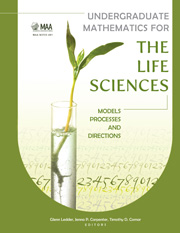III - Directions
Summary
Introduction
Each of the papers in the Directions section addresses some perceived, but largely unmet, need in curricular development for undergraduate mathematical biology. Of course the question of what developments ought to occur is a matter of opinion. Each of these papers lays out a strong case and offers insights on how to introduce and develop the topics. As editors, we endorse these calls for a change in emphasis.
The section begins with the paper Integrating Statistics into College Algebra to Meet the Needs of Biology Students, by Sheldon Gordon of Farmingdale State University and Florence Gordon of the New York Institute of Technology. These authors are well known for their efforts to revitalize college algebra and precalculus courses. They argue for an algebra course designed to prepare students for statistics rather than calculus. The course would be more relevant to the life science students who constitute a large portion of the enrollment. The authors offer many suggestions for ways to bring statistical ideas and methods into the college algebra course while recommending a greater focus on concepts rather than techniques. Readers interested in precalculus courses should also see the paper by Ardis and Subramanian in the Processes section.
In Motivating Calculus with Biology, Sebastian Schreiber of the University of California at Davis argues that mathematics for biology should emphasize mathematical modeling. While all mathematics books contain word problems, some with biological themes, the typical word problem falls short of providing students with experience in mathematical modeling.
- Type
- Chapter
- Information
- Undergraduate Mathematics for the Life SciencesModels, Processes, and Directions, pp. 165 - 168Publisher: Mathematical Association of AmericaPrint publication year: 2013

